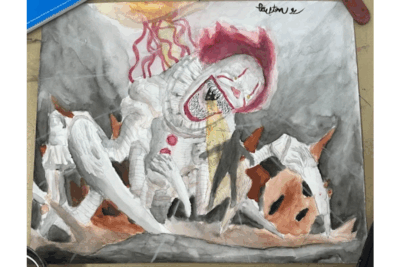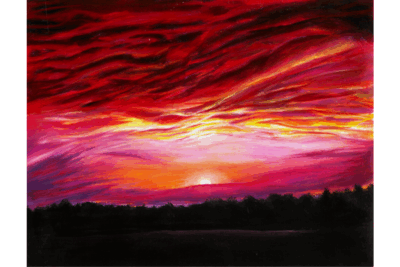The lights dimmed and a scratchy recording began playing over the speakers in Sauder, the pops and crackles accompanying a woman singing with a piano. An organ crept in and began to mirror the gospel chords in the recording, almost compelling listeners to bow their heads in reverence.
As the organ began to swell, Marc Cohn strode through the door on stage right, eliciting strong applause. Rather than walk immediately to his piano to begin playing, Cohn stepped to a microphone center-stage to provide some background for the evening.The songwriter explained that his visit to Sauder Concert Hall was part of a tour celebrating the 25th anniversary of his debut album, which was released Feb. 21, 1991 and went platinum. He and the other two musicians on the stage would play through his first album in its entirety as a way of acknowledging this landmark.
With the air of a narrator in a play, Cohn began describing the origins of his debut album, largely inspired by a musical pilgrimage he took to Memphis, Tennessee. While he was in Memphis, he met a woman named Muriel, the very same woman the audience heard on the recording before Cohn’s entrance.
Muriel, a schoolteacher by day, played piano every Friday night at a restaurant in Memphis called The Hollywood. A friend of Cohn’s suggested he seek her out while he was in Memphis, so he went to hear her play. Muriel became a huge influence on Cohn’s writing, and once he had written most of the songs for his first album, he went back to Memphis to play them for her.
Cohn then proceeded to settle behind the Steinway, launching into the opening track of the album, “Walking in Memphis.” The introduction to this iconic song made it even more meaningful because the listeners were able to catch specific references to Muriel and others in Cohn’s conversational singing style. Straightforward percussion and another talented keyboardist gave the song impact, the minimal instrumentation allowing Cohn’s voice and piano playing to come to the fore.
While the three musicians remained strong throughout the whole performance, the concept of playing an album in its entirety, however, grew stale. While the format of the show was interesting, especially for long-time fans, it felt prescriptive and overly rehearsed at times.
The prescriptive nature of the show was most apparent when Cohn came out for his encore, which was a reprise of the opening number. Granted, the reprise was well done, but Cohn seemed to come back on stage before the audience had sufficient time to truly “ask” for an encore.
Though parts of the performance were slightly stale, certain songs still carried a fervent energy. “29 Ways” was the last song Cohn sang before the encore. The vibe for this tune was different because the singer stood behind the center-stage microphone, letting his keyboardist take the helm of the grand piano.
The Sauder Steinway has likely never been played like that before, and may not ever be played that way again. The keyboard player let loose a barrage of beautifully executed blues lines that had the ivories tingling and the audience applauding.
The trio really seemed to relax on that number, and it was easy to see that they were in their element. Even though parts of the show seemed a bit contrived, it was a joy to see skilled musicians working together, especially when they fed off of one another and had a good time with the music.


